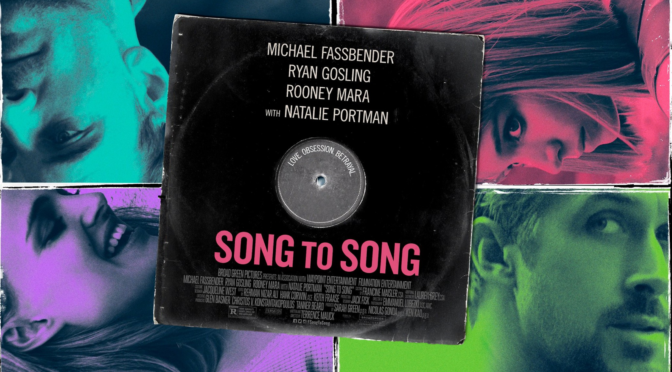After making national headlines for being in the wrong place at the wrong time, sisters Celeste (Natalie Portman; Black Swan) and Ellie (Stacy Martin; Nymphomaniac) write a song about their encounter that allows Celeste to become a worldwide pop star. In the present, Celeste is releasing a new album and starting a tour while dealing with mental and physical issues and attempting to raise a teenage daughter of her own.
The film is framed with biopic style narration from Willem Dafoe (Spider-Man) that creates an interesting conceit. It makes the film a deliberate retelling of the Celeste’s life rather than simply portraying the actual events and Dafoe’s tone has the perfect level of retrospective regret. The film uses his voiceover to frame Celeste’s adulthood as inevitable given each of her childhood vignettes. With the exception of the final lines, which feature a laughably bad coda, the narration adds a fatalist twist to the story.

Portman is winning significant praise for her lead role and, by her low standards, she does an adequate job. She plays Celeste as a neurotic, self-absorbed diva that, while aware of her potentially fading stardom, still believes she is the best out there and dismisses the contributions others have made to her success. Portman is an actor that often suffers from what is called mechanical acting. Her gestures, physicality, and the delivery of her lines feel rehearsed so instead of seeing a character onscreen we notice an actor attempting to play a character and the same issue persists here. The noticeable aspects of her performance are her adopted mannerisms, not an intended emotional state. But, compared to Portman’s history of bad to awful acting, this is one of her more tolerable outings. Regardless of the final quality of her acting, she is nothing if not committed. She throws herself into the role, especially in a late dance performance, and this ethic, despite a lack of results, is admirable.
The real star of the film is its direction. Brady Corbet (Childhood of a Leader) uses a bold, grimy style. The story has an explosive opening that establishes the film’s grungy aesthetic. The events onscreen feel like the unfiltered, unpolished version of behind the scenes videos for a concert where the star and their entourage are bickering and getting high instead of collaboratively preparing for the next show. It is this internal drama that is the film’s focus. There has been a lot of advertising about the original songs being composed by pop musician Sia, but, while well-made, they are inconsequential to the narrative. Vox Lux isn’t a story of stardom corrupting an innocent youth, Corbet is interested in how fame released, and continues to grow, an inner version of Celeste that always existed but would never have manifested without the freedom allowed by her global success. This a unique and interesting angle to take on effect of sudden fame, but with a mediocre lead and an embarrassing narrative bookend, Vox Lux isn’t able to maintain the strength of its shocking opening.

3/5 stars.








